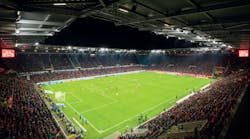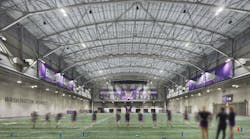A panel of experts will discuss current and future LED technologies, why municipalities across the country are switching to them, cost savings associated with LEDs and the role of government in LED-related research.
The briefing is free and open to the public. It takes place at B340 Rayburn House Office Building, Washington, DC 20515 on Thursday, November 12, from 12 to 1:30 pm.
Speakers are:
Andrew Brix, Energy Programs Manager
City of Ann Arbor, Michigan
Topic: Ann Arbor: An LED City
James Brodrick, Solid-State Lighting Program Manager
US Department of Energy
Topic: Solid-State Lighting Program Overview: Moving SSL from Lab to Market
Mathew Sommers, LED Design Manager
GE Lumination
Topic: Green Lighting, Inside and Out: LED Lighting Examples
Alex Fong, Senior VP, Life Sciences & Instrumentation
Gooch and Housego
Moderator
The American Recovery and Reinvestment Act has prioritized investing in energy-efficient technologies and reducing the cost of high-performance lighting products. Continuing advances, with the support of federal funding for energy efficient technologies, can accelerate progress toward creating a US-led market for high-efficiency light sources that save more energy, reduce costs and have less environmental impact than conventional light sources.
LEDs use half the energy (or less) and last 10 to 12 years longer than conventional bulbs. Additionally, LEDs contain no mercury, unlike compact fluorescent light bulbs. Studies suggest that a complete conversion to the LEDs could decrease carbon dioxide emissions from electric power use for lighting by up to 50 percent in just more than 20 years. Lighting uses 22 percent of the electricity and 8 percent of the total energy spent in the United States, according to government reports.




